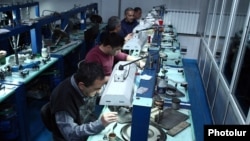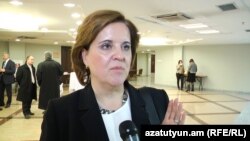Economic growth in Armenia is likely to slow to about 2 percent this year, a senior official from the International Monetary Fund said on Wednesday, echoing the World Bank’s most recent forecast.
“I think that we have to be realistic for 2016,” Teresa Daban Sanchez, the head of the IMF office in Yerevan, told RFE/RL’s Armenian service (Azatutyun.am). “I don’t think that economic growth will be rapid. It should stand at around 2 percent.”
“This growth rate is not bad … given what is happening in Russia and the European Union,” said Daban Sanchez.
The World Bank also forecast last month that the Armenian economy will likely expand by 2 percent in 2016.
The Armenian government recorded a growth rate of around 3 percent last year despite decreased domestic consumption resulting from falling remittances from Armenian migrant workers in Russia.
Separate government data for different sectors of the economy suggests that Gross Domestic Product increased more rapidly in the first quarter of this year. The National Statistical Service (NSS) registered 9 percent and 10 percent year-on-year increases in industrial output and services other than trade. The Armenian agriculture sector grew by 3.3 percent in the same period, according to the NSS.
These gains contrasted with a 1.1 percent drop in the volume of retail and wholesale trade reported by the government agency. It explains why first-quarter Armenian imports fell by 16 percent.
By contrast, Armenian exports soared by over 26 percent in January-March 2016. Russia generated most of this increase, NSS figures show.
“We are going to push the economy forward,” Prime Minister Hovik Abrahamian said in March.
Analysts caution, however, that faster growth will not be sustainable unless the Armenian authorities genuinely crack down on tax evasion and end their privileged treatment of wealthy government-linked businessmen that control lucrative sectors of the domestic economy. The IMF and the World Bank have for years been pushing for such reforms.





